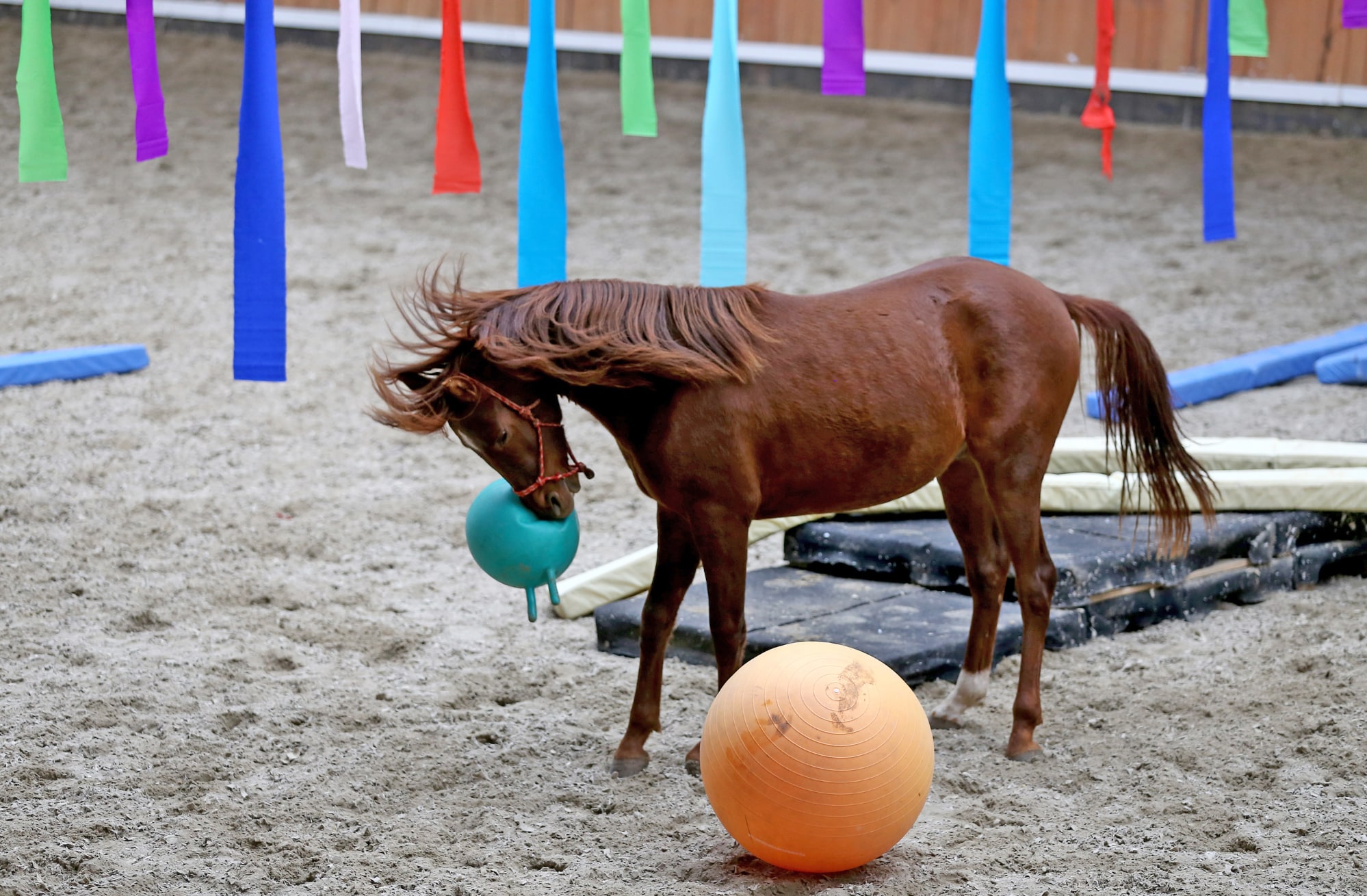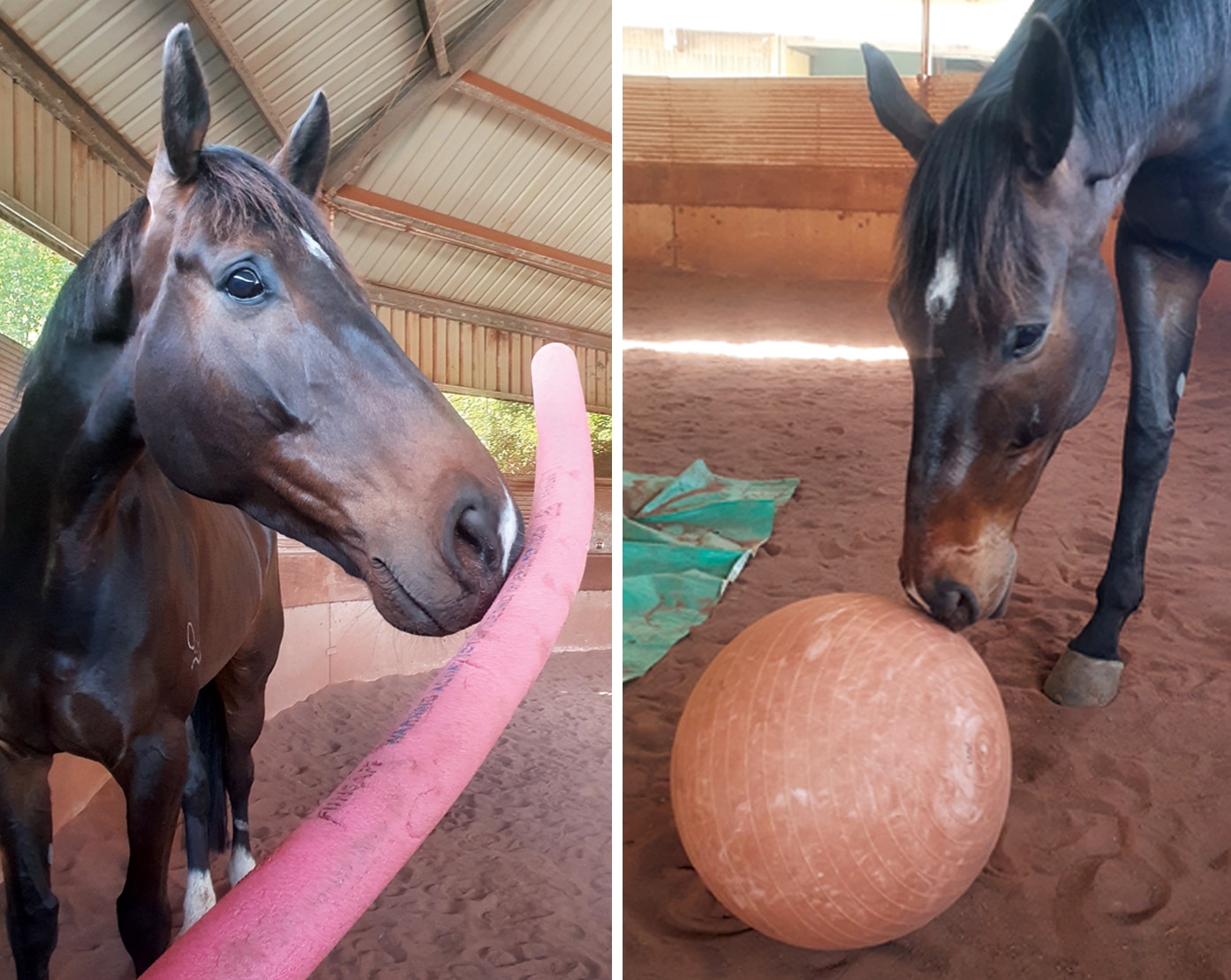
Seven tips for desensitising your horse
There’s more to desensitising a horse than might meet the eye. CHRISTINE ARMISHAW goes into detail in the second of two informative articles.
If you haven’t already, please read Part 1 of this article in our Dec/Jan issue (where you’ll also find the first three of our eight tips). Before you work on desensitising your horse, it’s important to understand the signs that indicate your horse is either starting to relax, or is in a relaxed state. These signs, which include a lowered head, blinking, licking, chewing, yawning and head shaking, are indicators as to whether what you’re doing is working, or whether you’re making matters worse. I go into much more detail on these signs in Part 1 – so be sure to read it.
- See, hear, or touch: Some horses can be spookier in response to visual stimuli (things they see), or auditory stimuli (things they hear), or kinesthetic stimuli (things they touch). Your goal is to figure out what it is that your horse is most bothered by, which involves a bit of trial and error. Some won’t care about pool noodles but will be petrified of walking across a tarp. A tarp can trigger all of their senses because it looks funny sitting there on the ground, it makes a noise when they walk on it, and it moves.
- Basic tools: Two of my favourite tools are a tarpaulin to lay on the ground, and different coloured pool noodles to wave around, touch the horse with, and raise above their heads. In their world, there’s nothing much taller than a horse, so while they may be fine with things at ground level or chest height, lift it above their head and that’s a very different thing! Similarly, something they may be happy with in front of their eye they will react to if placed behind the eye, which is where you sit – so you need to have every angle covered. I also have a little tin full of stones to rattle to help horses who react to auditory stimuli, and an umbrella is always a good thing to have on hand – it moves, it opens and closes, it makes a noise, and you can lift it up high.
You can literally walk around your house or go to an op shop and find things to use. You don’t need to spend a lot of money. Even an old horse rug with the straps removed can be used as a tarp. Be inventive, because as long as it can’t injure your horse, the world is your desensitising tool oyster!

- Left or right: Here’s a fun fact – a horse’s left eye and right eye are not connected in the same way ours are, they almost work independently of each other. There’s a couple of things to consider here. When you walk past something and show it to your horse from one side, they might be fine. But come at it from the other side so they see it out of the other eye, and it’s a different story! You have to take the time to do everything from both sides, or else you’re only doing half a job.
Additionally, researchers discovered that when they put something new into a horse’s environment, the horse would look at it out of their left eye when they were assessing it for danger. Once they were sure it was non-threatening, they would investigate further by looking at it out of their right eye. If you try and force a horse to look at something for the first time out of its right eye, they’ll get quite bothered because that’s not the eye they use to assess for danger. So, always let them experience something new out of their left eye.
- What’s the goal? The goal of desensitisation is not to flood the horse with stimuli. If you rattle a plastic bag until the horse finally gives in, calms down and stands there, you’ve missed the point. The goal is to teach the horse to create a relaxed, calm, self-soothing body posture, with their head dropped and their eye below the wither. For example, if you’re rattling a tin of stones and the horse throws it their head up and/or takes a step backwards, don’t increase the intensity of the noise. Keep an even pressure on your rope, and as soon as the horse takes a step towards you, stop the rattling. If their head is up, as soon as they drop it down even for even a second, stop the rattling. By stopping the rattling every time they do what you want, they’ll begin to offer you more. Gradually they learn that they can get rid of the scary thing by lowering their head, and when it’s lower than the wither, they stop producing the stress hormone cortisol, and physically become more relaxed.
But don’t forget that not every horse is going to react in the same way. I have three Thoroughbred geldings who react to the exact same things in different ways. So it’s down to different levels of spookiness, different levels of confidence, and different horses. It could be quite disheartening if you start desensitisation training expecting a text book result – you might be lucky and get it, but don’t become frustrated if you don’t. If your horse is very reactive and doesn’t offer much head lowering, then you have to accept even the briefest nod and take the pressure off before they throw their head back up again. By accepting an attempt in the right direction, you encourage them to try the same thing again – and as time goes on, you can ask for a little bit more.
Or maybe your horse is so nervous that they don’t want to pop their head down at all and instead they’re backing away from you. In that case, before you even get their head down, you have to get a step towards you. As soon as you do, take the pressure off. You might have to lower your expectations and take something that’s a very general thought in the right direction and build on it.
A final note
As a final note, if you can think like a horse, you can do things in a way that’s so much more beneficial. It makes the horse feel that they’re understood, and it keeps both the horse and rider much safer. What we’re trying to achieve is to prevent the horse from spooking, exploding, and becoming dangerous. We want to work towards preventing it before it even happens. Obviously, we can’t control everything, but we can certainly minimise risk, and having this kind of awareness and understanding of your horse is a sure-fire way to do that.
Christine Armishaw Equestrian offers a variety of coaching and other equestrian services at her Otford Valley Equestrian Agistment & Training Centre just south of Sydney, NSW.


